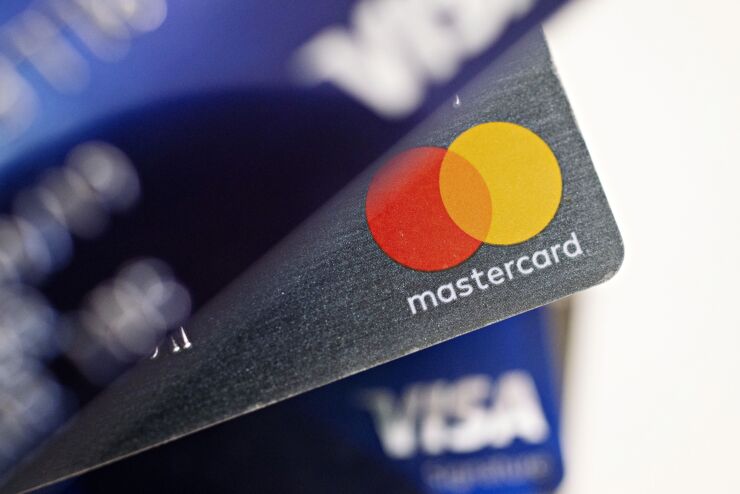U.S. credit card balances surged to a record in the third quarter as banks bet that consumers with less-than-stellar credit will be able to handle more debt.

Balances soared 19% to $866 billion, with average credit lines also climbing to an all-time high, according to data from the credit reporting company TransUnion. The jump came after card originations to subprime consumers climbed more than 12% in the previous three-month period.
"In this inflationary environment, consumers are increasingly turning to credit," Paul Siegfried, senior vice president and credit card business leader at TransUnion, said in a statement Tuesday released along with a report on the state of the industry. "This is particularly true among the subprime segment of consumers."
In the depths of the pandemic, banks feared that the initial surge in unemployment would leave consumers unable to pay their bills, and many pulled back on credit card marketing and originations. Consumers, too, were forced to curtail their spending due to lockdowns. That's all changed as banks look to load up on more customers, and consumers return to shopping and traveling after the lifting of lockdowns.
Now, investors are closely watching delinquencies, a harbinger of future losses. The percentage of credit-card loans that were 90 days past due jumped to 1.94% in the third quarter, surpassing pre-pandemic levels for the same period, TransUnion said.
Surge in HELOCs
Supply-chain and other logistics challenges continue to plague the auto-loan industry, which saw total new loans drop almost 15% in the second quarter from the same time last year.
Mortgage originations, which have been hit hard by the chilling effects of rising interest rates, plummeted 47% to 1.9 million in the second quarter, according to the report. Still, the equity available to homeowners continues to be a bright spot amid the volatility, and the number of new home-equity lines of credit surged almost 50% in the quarter to 409,110.
"HELOCs and home-equity loans are growing at dramatically higher rates than in recent years," Joe Mellman, senior vice president and mortgage business leader at TransUnion, said in the report, adding that homeowners are sitting on a combined $604 billion in non-mortgage debt. "These products are attractive options for homeowners because they can use their available home equity to pay off more expensive debt."





